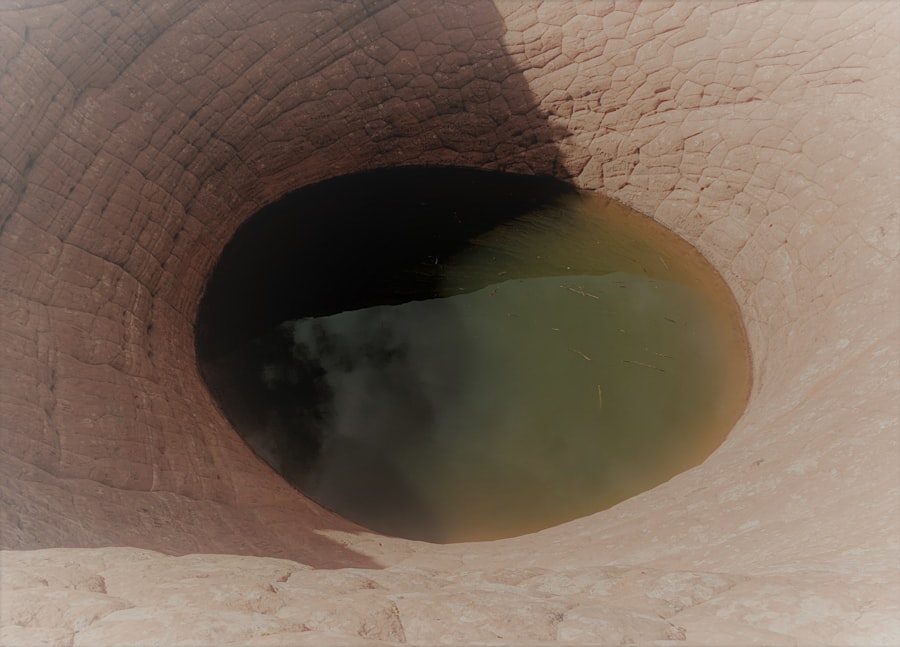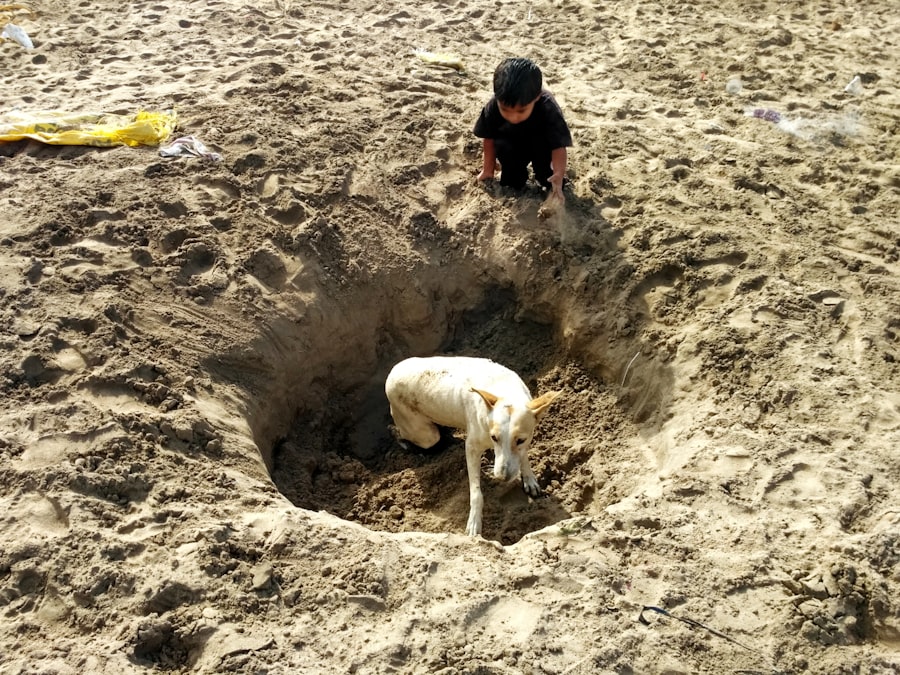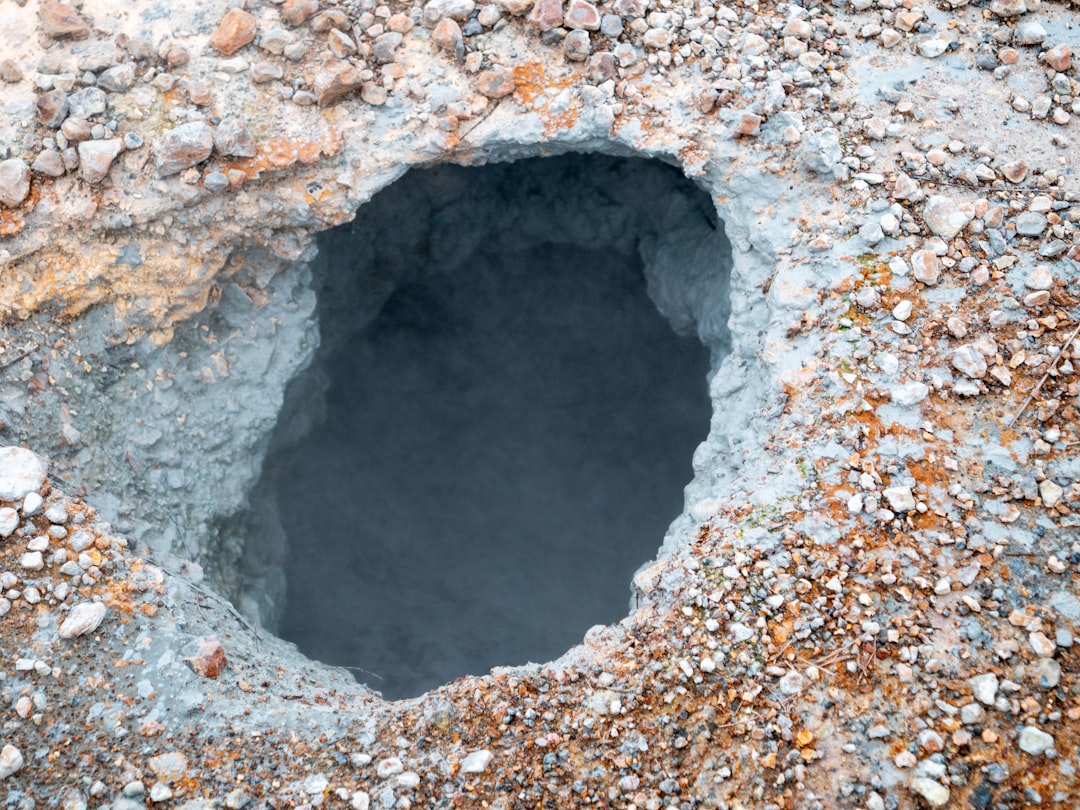The Kola Superdeep Borehole, a remarkable feat of engineering and scientific inquiry, stands as a testament to human curiosity and ambition. Initiated in 1970 by the Soviet Union, this ambitious project aimed to penetrate the Earth’s crust to unprecedented depths. Located on the Kola Peninsula in northwestern Russia, the borehole was intended to reach a depth of 15,000 meters, a goal that would allow scientists to explore the geological layers beneath the surface.
The project not only sought to uncover the mysteries of the Earth’s crust but also aimed to provide insights into the processes that govern our planet’s geology. As the deepest artificial point on Earth, the Kola Superdeep Borehole has captured the imagination of scientists and laypeople alike. It serves as a symbol of the relentless pursuit of knowledge and the desire to understand the very fabric of the Earth.
The borehole’s construction and subsequent findings have sparked interest in geology, geophysics, and even astrobiology, as researchers ponder the implications of their discoveries for life beyond our planet. The Kola Superdeep Borehole remains a significant landmark in the history of scientific exploration, representing both the triumphs and challenges faced by those who dared to delve into the depths of the Earth.
Key Takeaways
- The Kola Superdeep Borehole was a scientific drilling project in Russia that aimed to penetrate the Earth’s crust and study its composition.
- The project’s main goal was to learn more about the Earth’s crust, including its temperature, pressure, and the presence of water and gas.
- Located on the Kola Peninsula in Russia, the borehole was drilled to a depth of over 12 kilometers, making it the deepest hole ever drilled.
- Engineers faced technical challenges such as high temperatures, unexpected rock formations, and drilling fluid failures during the project.
- The drilling process led to discoveries about the Earth’s crust, including unexpected water and gas at extreme depths, and provided valuable scientific data.
The Purpose and Goals of the Project
The primary purpose of the Kola Superdeep Borehole was to investigate the geological structure of the Earth’s crust and to gather data that could enhance understanding of various geological phenomena. Scientists aimed to explore the composition and characteristics of rocks at extreme depths, which had previously been inaccessible. By drilling deeper than ever before, researchers hoped to uncover information about seismic activity, mineral deposits, and the thermal gradient of the Earth’s crust.
The project was also designed to test theories related to plate tectonics and continental drift, providing a more comprehensive understanding of Earth’s geological history. In addition to its scientific objectives, the Kola Superdeep Borehole was emblematic of Cold War-era competition between superpowers. The Soviet Union sought to demonstrate its technological prowess and commitment to scientific advancement through this ambitious drilling project.
The goals extended beyond mere exploration; they included fostering international collaboration in scientific research and enhancing national pride. As such, the Kola Superdeep Borehole represented not only a quest for knowledge but also a strategic endeavor that reflected the geopolitical climate of its time.
The Location and Construction of the Borehole

Situated on the Kola Peninsula, approximately 10 kilometers from the town of Zapolyarny, the Kola Superdeep Borehole was strategically chosen for its geological significance. The region is characterized by ancient crystalline rocks, which provided an ideal setting for deep drilling. The site was selected based on geological surveys that indicated a relatively stable area with minimal seismic activity, allowing for safer drilling operations.
The location also offered access to necessary resources and infrastructure, facilitating the ambitious project. Construction of the borehole began in 1970 and involved a series of complex engineering processes. The initial drilling utilized a rotary drilling technique, which allowed for efficient penetration through various rock layers.
Over time, engineers faced numerous challenges related to temperature and pressure as they descended deeper into the Earth. At depths exceeding 7 kilometers, temperatures reached around 180 degrees Celsius, complicating drilling efforts and requiring innovative solutions. Despite these obstacles, the team persevered, employing advanced technology and techniques to continue their exploration into the depths of the Earth.
The Technical Challenges Faced by the Engineers
| Challenge | Description |
|---|---|
| Complex Systems | Dealing with intricate and interconnected systems that require deep understanding and careful management. |
| Performance Optimization | Ensuring that systems and applications perform efficiently and effectively under various conditions. |
| Security | Protecting systems and data from potential threats and vulnerabilities. |
| Scalability | Designing systems that can handle increasing workloads and growing user bases. |
| Legacy Systems Integration | Integrating new technologies with existing legacy systems while maintaining functionality. |
As drilling progressed deeper into the Earth’s crust, engineers encountered a myriad of technical challenges that tested their ingenuity and resilience. One of the most significant issues was managing extreme temperatures and pressures that increased with depth. At around 5 kilometers down, temperatures soared to approximately 100 degrees Celsius, while at greater depths, they reached even higher levels.
This posed serious risks to both equipment and personnel, necessitating constant innovation in drilling technology and materials. Another challenge involved dealing with unexpected geological formations. As engineers drilled deeper, they encountered various rock types and structures that were not anticipated based on surface studies.
These formations often caused drill bits to wear out more quickly or become stuck in the borehole, leading to costly delays and requiring frequent adjustments in strategy. Additionally, maintaining a stable borehole became increasingly difficult as depth increased; engineers had to develop specialized casing techniques to prevent collapse or contamination of samples. These technical hurdles underscored the complexity of deep drilling projects and highlighted the need for adaptability in engineering practices.
Discoveries Made During the Drilling Process
Throughout its operational years, the Kola Superdeep Borehole yielded a wealth of scientific discoveries that significantly advanced understanding of Earth’s geology. One notable finding was the discovery of unexpected rock types at great depths, including metamorphic rocks that had undergone significant transformation due to heat and pressure.
Additionally, researchers uncovered valuable information about geothermal gradients—how temperature increases with depth—revealing that heat flow from the Earth’s interior is more complex than previously thought. The borehole also provided samples that contained traces of ancient microorganisms trapped within rock formations, offering clues about life in extreme environments. These discoveries not only enriched scientific knowledge but also sparked further research into astrobiology and the potential for life on other celestial bodies.
The Impact of the Kola Superdeep Borehole on Scientific Knowledge

The Kola Superdeep Borehole has had a profound impact on scientific knowledge across multiple disciplines. Its findings have contributed significantly to geology, particularly in understanding crustal composition and behavior under extreme conditions. The data collected from this project has been instrumental in refining models related to plate tectonics and seismic activity, enhancing predictions about earthquakes and volcanic eruptions.
Moreover, the borehole’s discoveries have implications beyond Earth science; they have influenced fields such as biology and astrobiology by providing insights into extremophiles—organisms that thrive in harsh environments. This research has broadened perspectives on where life might exist beyond Earth, particularly in environments like those found on other planets or moons within our solar system. The Kola Superdeep Borehole has thus become a cornerstone for interdisciplinary research, fostering collaboration among scientists from various fields seeking to unravel the mysteries of life and geology.
The End of the Project and Current Status of the Borehole
The ambitious Kola Superdeep Borehole project officially came to an end in 1992 after reaching a depth of 12,262 meters—far short of its original goal but still an impressive achievement in its own right. Economic challenges following the dissolution of the Soviet Union played a significant role in halting further drilling efforts. Despite this setback, the data collected during its operation continues to be analyzed and utilized by researchers worldwide.
Today, the borehole remains sealed but stands as a historical site of scientific exploration. While no further drilling is planned at this location, it serves as a valuable resource for ongoing geological studies. Researchers continue to publish findings based on data obtained from the borehole, ensuring that its legacy endures in scientific literature and education.
Controversies and Criticisms Surrounding the Borehole
Despite its scientific contributions, the Kola Superdeep Borehole has not been without controversy and criticism. Some skeptics argue that the project’s ambitious goals were unrealistic given technological limitations at the time. Critics have pointed out that while significant data was collected, much of it remained underutilized due to insufficient funding for further research or analysis after the project’s conclusion.
Additionally, concerns have been raised regarding environmental impacts associated with deep drilling projects like Kola. Critics argue that such endeavors can disrupt local ecosystems or lead to contamination of groundwater sources if not managed properly. These discussions highlight ongoing debates about balancing scientific exploration with environmental stewardship—a challenge that continues to resonate in contemporary discussions about deep drilling initiatives worldwide.
The Legacy of the Kola Superdeep Borehole
The legacy of the Kola Superdeep Borehole is multifaceted, encompassing both its scientific achievements and its cultural significance as a symbol of human curiosity. It remains an iconic example of deep drilling efforts that have shaped modern geology and inspired future generations of scientists. The borehole’s findings have laid foundational knowledge for ongoing research into Earth’s processes and have encouraged interdisciplinary collaboration among scientists from various fields.
Moreover, it serves as a reminder of humanity’s relentless pursuit of knowledge despite challenges and setbacks. The Kola Superdeep Borehole has become a point of reference in discussions about deep Earth exploration and continues to inspire new projects aimed at understanding our planet’s mysteries. Its legacy endures not only through scientific publications but also through educational initiatives that seek to engage young minds in geology and earth sciences.
Other Deep Holes and Drilling Projects Around the World
The Kola Superdeep Borehole is not an isolated case; it is part of a broader landscape of deep drilling projects undertaken globally. Other notable examples include Japan’s Chikyu Hakken drilling vessel, which aims to explore subduction zones and study tectonic plate interactions in real-time. Similarly, projects like the Integrated Ocean Drilling Program (IODP) focus on understanding oceanic crust formation and its relationship with global climate change.
These initiatives reflect a growing recognition of the importance of deep Earth exploration in addressing pressing scientific questions related to climate change, natural disasters, and resource management. As technology advances, new drilling techniques are being developed that promise even deeper penetration into Earth’s crust while minimizing environmental impacts—a testament to humanity’s commitment to understanding our planet’s complexities.
The Future of Deep Drilling and Exploration
Looking ahead, deep drilling projects like those inspired by the Kola Superdeep Borehole will likely play an increasingly vital role in advancing scientific knowledge about Earth and beyond. As researchers continue to grapple with challenges such as climate change and resource depletion, understanding geological processes will be crucial for developing sustainable solutions. Innovations in drilling technology are expected to enhance capabilities for exploring extreme environments both on Earth and other celestial bodies.
As interest grows in planetary exploration—particularly missions targeting Mars or icy moons like Europa—lessons learned from projects like Kola will inform strategies for investigating subsurface conditions elsewhere in our solar system. In conclusion, while the Kola Superdeep Borehole may have reached its operational limits decades ago, its impact on science continues to resonate today. It stands as a symbol of human curiosity—a reminder that even when faced with formidable challenges, there remains an unyielding desire to explore and understand our world more deeply.
The Kola Superdeep Borehole, often referred to as the deepest man-made hole on Earth, reaches an astounding depth of 12,262 meters (about 40,230 feet). This remarkable feat of engineering was achieved by Soviet scientists in an effort to explore the Earth’s crust. For those interested in learning more about similar fascinating facts and achievements, you might find this article intriguing. It delves into various captivating topics that pique the curiosity of anyone interested in the wonders of our world.
FAQs
What is the deepest man-made hole on Earth?
The Kola Superdeep Borehole is the deepest man-made hole on Earth. It was drilled by the Soviet Union on the Kola Peninsula in Russia.
How deep is the Kola Superdeep Borehole?
The Kola Superdeep Borehole reaches a depth of 12,262 meters (40,230 feet), making it the deepest man-made hole on Earth.
What was the purpose of drilling the Kola Superdeep Borehole?
The primary purpose of drilling the Kola Superdeep Borehole was to study the Earth’s crust and mantle, as well as to explore the possibility of drilling to the Earth’s mantle.
When was the Kola Superdeep Borehole drilled?
Drilling of the Kola Superdeep Borehole began in 1970 and continued until 1994, when it was ultimately abandoned.
What did scientists learn from the Kola Superdeep Borehole?
Scientists learned a great deal about the Earth’s crust and mantle from the Kola Superdeep Borehole, including the discovery of microscopic fossils at depths of over 6 kilometers (3.7 miles). They also gained insights into the geology and seismic activity of the region.
